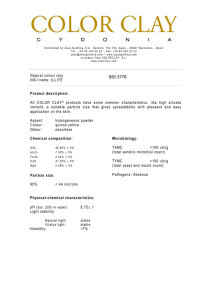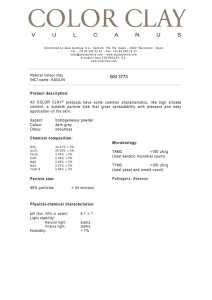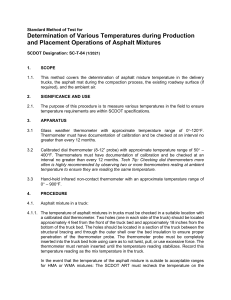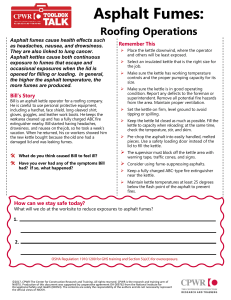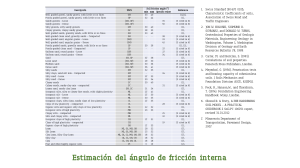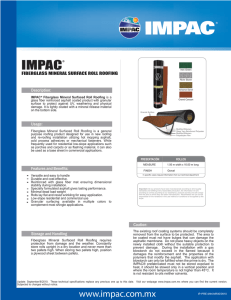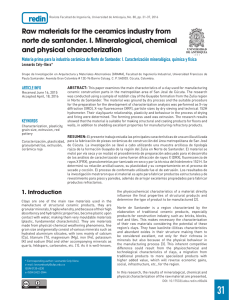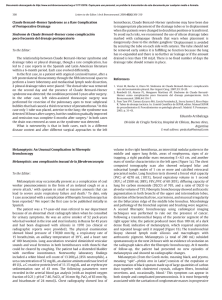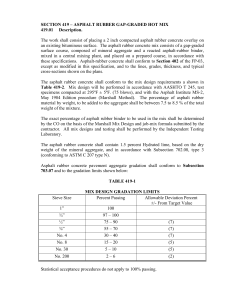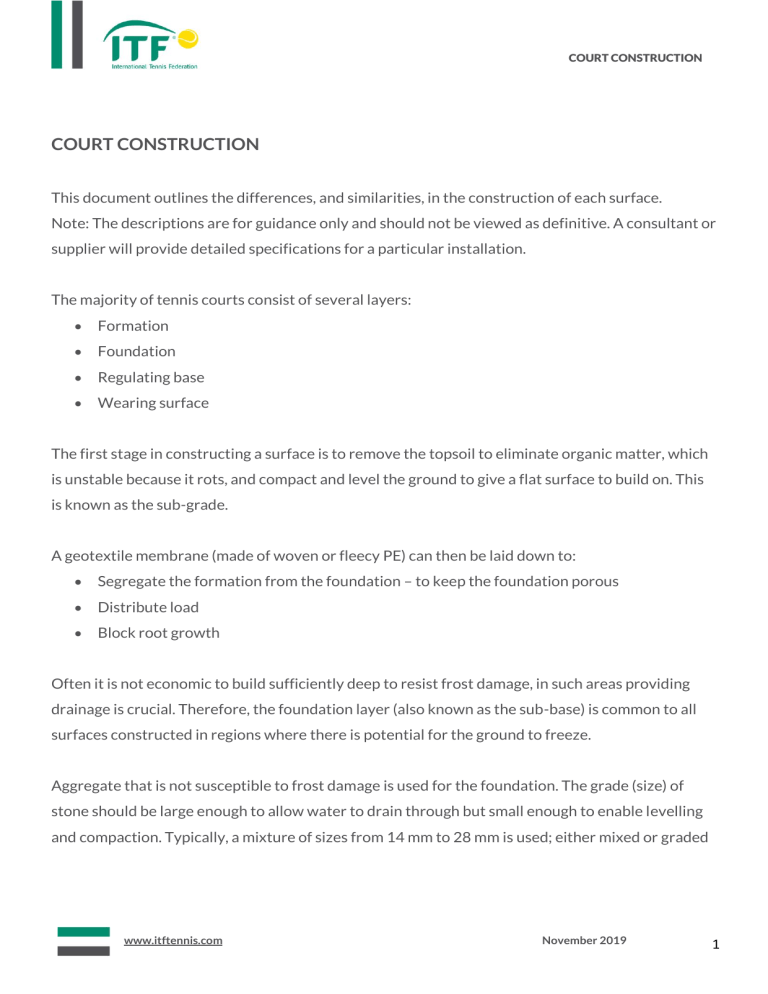
COURT CONSTRUCTION COURT CONSTRUCTION This document outlines the differences, and similarities, in the construction of each surface. Note: The descriptions are for guidance only and should not be viewed as definitive. A consultant or supplier will provide detailed specifications for a particular installation. The majority of tennis courts consist of several layers: • Formation • Foundation • Regulating base • Wearing surface The first stage in constructing a surface is to remove the topsoil to eliminate organic matter, which is unstable because it rots, and compact and level the ground to give a flat surface to build on. This is known as the sub-grade. A geotextile membrane (made of woven or fleecy PE) can then be laid down to: • Segregate the formation from the foundation – to keep the foundation porous • Distribute load • Block root growth Often it is not economic to build sufficiently deep to resist frost damage, in such areas providing drainage is crucial. Therefore, the foundation layer (also known as the sub-base) is common to all surfaces constructed in regions where there is potential for the ground to freeze. Aggregate that is not susceptible to frost damage is used for the foundation. The grade (size) of stone should be large enough to allow water to drain through but small enough to enable levelling and compaction. Typically, a mixture of sizes from 14 mm to 28 mm is used; either mixed or graded www.itftennis.com November 2019 1 COURT CONSTRUCTION (laying smaller aggregate closer to the surface). Grass and clay surfaces need some moisture so the foundation layer should not allow total drainage. The depth of the foundation layer, after it has been compacted, depends on the type of soil in the formation and local climate, e.g. depth of frost penetration, but should extend approximately 150 mm below the surface. The levelling course is laid on top of the foundation layer to provide a stable platform for the surface system. The construction of these layers varies between surfaces, follow the links below to the different court surfaces: • Acrylic • Artificial grass and Artificial clay • Carpet • Clay • Grass Acrylic The base is normally a concrete or asphalt construction. If concrete is used, it should be reinforced to reduce cracking. A series of surface coatings of acrylic material provide the playing surface, the number of which can vary. 1. If required for stability, a geotextile membrane shall be laid on the sub-base. 2. 150 – 200 mm compacted depth of foundation. 3. 35 – 40 mm compacted depth of base course asphalt (14 – 20 mm diameter). 4. 25 – 30 mm compacted depth of wearing course asphalt (6 mm diameter). 5. Cushion system (if specified). 6. Acrylic (PMMA) or polyurethane (PU) based coating with aggregate. www.itftennis.com November 2019 2 COURT CONSTRUCTION Artificial grass and Artificial clay 1. Geotextile membrane and drainage system if required. 2. 150 mm (minimum) compacted depth non-frost susceptible carboniferous limestone or granite. 3. 40 mm compacted depth base course porous asphalt. 4. 25 mm open grade 6 mm diameter aggregate porous asphalt. 5. Sand filled artificial grass wearing course. Artificial grass is supplied in rolls. Outside, it needs to be laid over a porous base of concrete or asphalt to allow drainage. Carpet 1. Geotextile membrane if required. 2. 200 mm compacted depth non-frost susceptible carboniferous limestone or granite. 3. 40 mm compacted depth base course porous asphalt. 4. 25 mm compacted depth dense asphalt wearing course. 5. Polymeric carpet or rubber mat. Consisting of rubber bound in polyurethane, polymeric surfaces can be cast in situ, or provided in prefabricated rolls. These surfaces need a flat concrete or asphalt substrate. www.itftennis.com November 2019 3 COURT CONSTRUCTION Clay 1. Geotextile membrane laid on the sub-grade. 2. 120 – 600 mm compacted depth of foundation. 3. 60 – 100 mm of graded aggregate that supports capillary action. 4. 40 – 50 mm compacted depth of crushed aggregate. 5. 3 - 6 mm of fine crushed aggregate. Clay courts need to be built with a slope of between 0.25 and 0.35% (for above ground irrigation). Grass 1. Perforated plastic drainage pipe. 2. 6-10 mm grade permeable backfill. 3. 50 mm blinding layer of aggregate to separate top soil from foundation. 4. 100 – 150 mm of top soil (root zone) composed of clay, silt and sand. 5. 8 – 12 mm of turf. The choice of grasses for the turf will depend on the soil, and drainage system, and the amount the court is used and maintained. Consult your local constructor. www.itftennis.com November 2019 4


